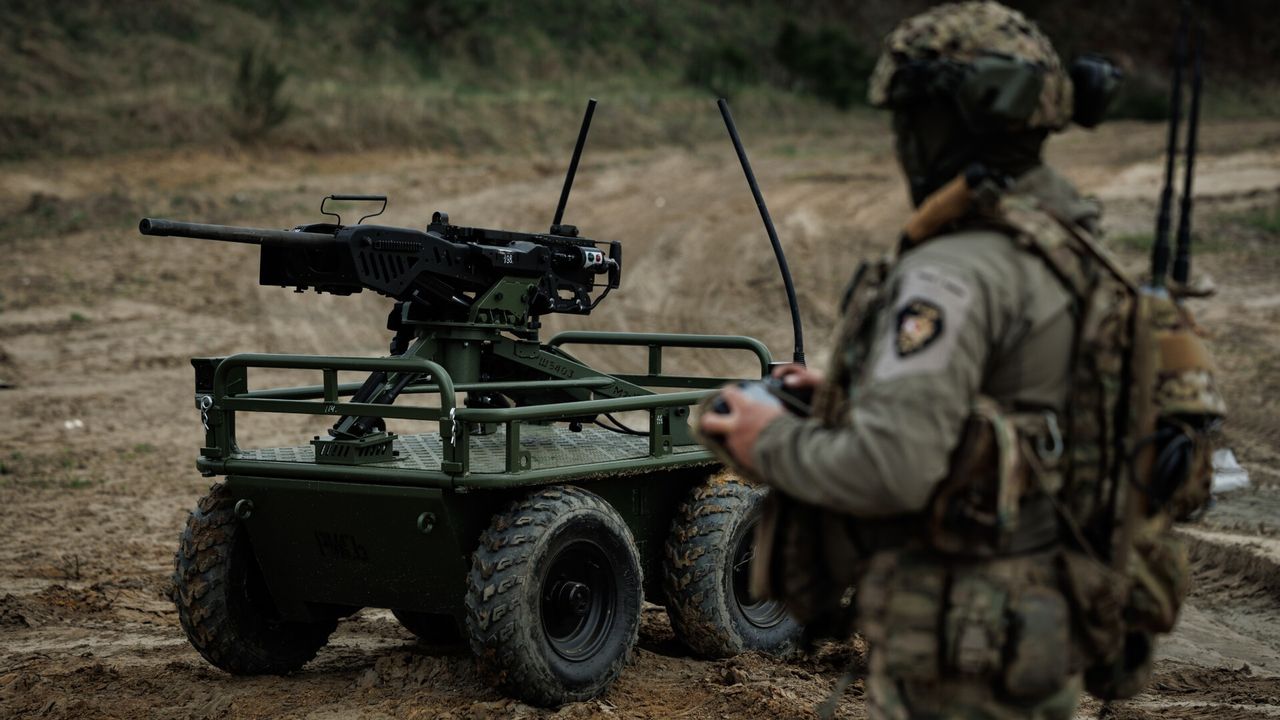The bandwidth offered by SpaceX’s Starlink satellites is proving inadequate for the effective operation of Ukraine’s frontline combat robots. This limitation is prompting the nation’s tech leaders to explore innovative solutions as they continue their efforts in the ongoing conflict with Russia.
Over the past year, Ukraine has deployed thousands of wheeled ground robots to assist its military units. These robots are tasked with delivering supplies, evacuating the wounded, and, in some cases, engaging Russian troops while minimizing the risks to Ukrainian soldiers. Despite the advantages these robots provide, the limited bandwidth available—sometimes as low as 10 megabits per second—has resulted in subpar video quality for remote control operations.
Vadym Burukin, technologist and CEO of the drone startup Huless, emphasized the challenges posed by this bandwidth restriction: “If you want to drive fast, you need a frame rate of at least 30 frames per second to be able to control the robot. If you only have ten frames per second and you are moving fast, there is a huge chance that you’re going to end up in a minefield or in a tree.”
Since the onset of the war, Starlink’s internet services have been vital for Ukraine, providing connectivity for troops and aiding in the operation of various unmanned systems. With approximately 200,000 Starlink terminals active in Ukraine, the country has become the largest user of Starlink services in Europe.
Despite this extensive network, the high number of devices—especially along the frontlines—has limited the robots’ speed. According to Andriy Dovbenko, CEO of the Ukrainian Tech Exchange network, the ground robots can only operate at about 6 miles per hour (10 kilometers per hour). Consequently, these robots may take up to two hours to traverse the 12-mile-wide (20-kilometer) grey zone, an area fraught with danger from Russian first-person-view (FPV) drones.
Burukin noted that Starlink terminals also face signal degradation due to vibrations from the rugged terrain. Environmental factors such as clouds and rain can further compromise connectivity. In light of these challenges, Ukrainian tech innovators are actively seeking alternatives that would allow the robots to move more quickly and effectively complete their missions.
To address the connectivity issue, Burukin and his team have developed tethered drones capable of flying up to 500 feet (150 meters) high, equipped with signal repeaters to enhance weak radio signals. “For ground-to-ground communication, the radio signal range is just a couple of kilometers,” explained Burukin. “With a repeater in the air, this range extends to over 40 kilometers (25 miles).”
These airborne repeaters significantly enhance the operational range of drones, allowing them to function effectively up to 48 miles (80 kilometers) away from their remote controllers. This capability enables Ukrainian forces to conduct exploratory missions deep into Russian-controlled territory without the constant risk of losing their Starlink connection.
“Recently, we were able to get all the way to the Donbas arena, a large stadium in the center of Donetsk, using our repeating equipment,” Burukin said. This location is approximately 30 miles (50 kilometers) from the current frontline and has been under Russian control since 2014.
Despite these innovations, Dovbenko insists that Starlink remains essential for Ukraine’s military operations. “There are many uses for Starlink in the war, but it’s not been developed specifically as a military technology, so it has its limitations,” he stated. “It would be good to have alternatives. But can we really produce an alternative to Starlink at scale? Probably not.”
In addition to tethered drones, AI-driven autonomous navigation systems are being integrated into military robots to help them navigate signal disruptions caused by deliberate jamming. Ukrainian innovators predict that AI will play a pivotal role in frontline operations in the coming years, allowing autonomous machines to operate without real-time human oversight, thereby minimizing vulnerability to radio interference and Starlink signal loss.
While fully autonomous combat robots may not completely replace human soldiers, they are expected to reduce the number of personnel needed in the most dangerous areas along the frontlines, enhancing overall operational safety and efficiency.







